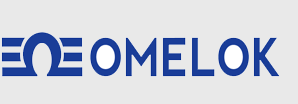- Driven by China's economy, German industry is optimistic about its development prospects in 2021
- Application of photoelectric switch in intelligent lock
- Application of proximity switch in action control and limit protection of CNC cutting machine
- Dealing with inverter failure: replacement or upgrade?
- Application of photoelectric detection and laser strike technology in UAV counter system
- Application of infrared sensor technology in the screening of pneumonia temperature
- Design and application of intelligent dispatch unattended system in coal mine
- Industrial Internet of things enters the era of artificial intelligence
By Jonathan kopczyk
For the frequency converter with fault or long service years, it is necessary to replace or upgrade it in time. In order to minimize costs and improve efficiency, users need to know when to replace and upgrade the inverter is the most appropriate.
In our era, VFD is the standard of motor control. Because they are primarily installed in commercial and industrial buildings, new and old applications benefit from the benefits of these intelligent devices. But, like all electronic devices, the frequency converter can't be used forever.
For example, due to a surge failure or a 20-year converter, it is incompatible with the building management system and may need to be replaced or upgraded. Remote monitoring is very important for this application. In either case, it is not as easy to change the inverter as simply replacing a unit, powering up and leaving.
On the other hand, when you know what to look for and how to perform the task correctly, the task itself can actually be very simple. Most people will encounter two situations when they change the frequency converter.
Scenario 1: replace the inverter with the same model
It sounds simple, but when replacing a converter with the same model, there are several things to confirm. The first priority is to match the model, voltage level and current /hp rating of both devices. This can also verify that the new inverter is suitable for the existing physical space. Next, all wiring must be connected to the same terminal name. This ensures that the I / O function of the new converter is the same as that of the old converter. Finally, the parameter settings should match the application critical settings.
There are many forms of backup, especially when the old inverter can still be powered on. If accessible, you can record the parameter settings, store them in software programs, even save them in the memory of the keypad, and then transfer to the new inverter. Ideally, this should be done before the replacement process occurs. If the inverter is installed in a larger device, the OEM may have its own parameter table. The worst case is that the user must manually set up the inverter and optimize the application.
It may be useful to keep some components from the old inverter. Depending on the severity of the inverter failure, some components (such as the keyboard, cooling fans and control / terminal board) are not damaged, they can be reused. Do not retain the main circuit components of the inverter (including capacitors), as this can cause internal damage or greater wear.
- Industrial Internet of things enters the era of artificial intelligence
- Driven by China's economy, German industry is optimistic about its development prospects in 2021
- Application of photoelectric switch in intelligent lock
- Application of proximity switch in action control and limit protection of CNC cutting machine
- Dealing with inverter failure: replacement or upgrade?
- Application of photoelectric detection and laser strike technology in UAV counter system
- Home - About us - New products - News - Download - FAQ - Feedback - Contact us - Sitemap
- Powered by semcms 4.6 Copyright @ 2009 - 2025 omelok


 13670175782
13670175782 


 2021/4/15
2021/4/15